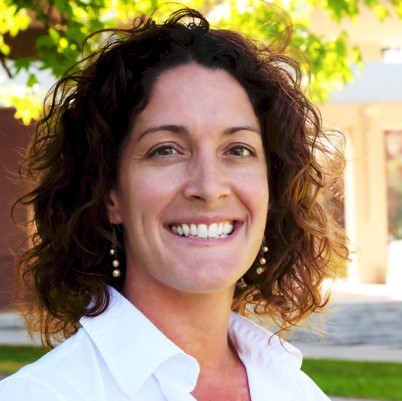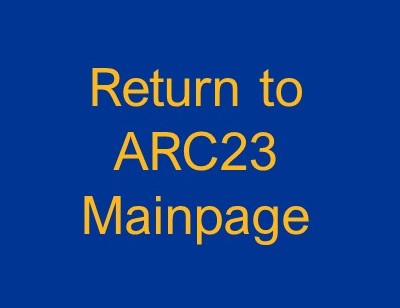ARC23 Keynote Speaker Rommie Amaro

In Situ Computational Microscopy of SARS-CoV-2
Rommie Amaro
Professor and Endowed Chair, Chemistry and Biochemistry, UC San Diego
Section Chair, Biochemistry and Physics, Department of Chemistry and Biochemistry, UC San Diego
Director, Visible Molecular Cell Consortium, UC San Diego
Co-Director, Drug Design Data Resource, UC San Diego
Abstract
In this talk, I will discuss our lab’s efforts, together with a global network of collaborators, to use all-atom molecular dynamics simulations (aka in situ computational microscopy) to understand the SARS-CoV-2 virus in atomic detail, with the goals to better understand molecular recognition of the virus and host cell receptors. I will focus on our studies of the spike protein, its glycan shield, its interactions with the human ACE2 receptor and host cell glycosaminoglycans, our ACM Gordon Bell Special Prize-winning efforts to model the SARS-CoV-2 virion, immunogen dynamics and design, and other features. I will also discuss our efforts to completely revise current models of airborne transmission of respiratory viruses by providing never-before-seen atomic level views of the SARS-CoV-2 virus within a respiratory aerosol.
Biography
A team led by Amaro explored the movement of SARS-CoV-2’s spike protein to understand how it gains access to the human cell. In a first-of-its-kind feat, the team built an AI-based work flow to more efficiently simulate the spike within the SARS-CoV-2 viral envelope comprising 305 million atoms—the most comprehensive simulation of the virus performed to date.
In recognition of this work, the team won the 2020 ACM Gordon Bell Special Prize for HPC-Based COVID-19 Research, widely known as the Nobel Prize of Supercomputing. The team included Arvind Ramanathan, computational biologist at Argonne National Laboratory, and Pitt's Lillian Chong, who is also speaking at ARC23. The following year, Amaro and an even larger interdisciplinary team simulated the Delta variant in a respiratory aerosol, which reached over 1-billion atoms, and is enabling the exploration of the molecular mechanisms underlying airborne transmission.
Dr. Rommie Amaro is a native of the south side of Chicago and earned her bachelor's degree in chemical engineering with high distinction from the University of Illinois at Urbana-Champaign in 1999. After graduating, she joined Kraft Foods, Inc. as an Associate Research Engineer in Glenview, Illinois, working mainly on Philadelphia Cream Cheese productivity and commercialization projects. After two years of working with condensed matter, she returned to Urbana to attend graduate school and earned a Ph.D. in Chemistry.
She worked in the lab of Professor Zan Luthey-Schulten, mainly on computational methods to reconstruct free energy profiles from non-equilibrium pulling experiments of ammonia conduction through a beta-barrel protein involved in histidine biosynthesis and studying mechanisms of allosteric regulation in proteins. She also worked closely with the National Institutes of Health (NIH) Resource for Macromolecular Modeling and Bioinformatics, led by Professor Klaus Schulten, where she helped develop a series of workshops that have now been taught worldwide.
After earning her Ph.D., Dr. Amaro went on to receive a NIH Kirschstein-National Research Service Award (NRSA) postdoctoral fellowship and worked under the tutelage of the Howard Hughes Medical Investigator and National Academy of Sciences member, Professor J. Andrew McCammon at University of California, San Diego (UCSD).
In 2009, Dr. Amaro started her independent research career in the Deparments of Pharmaceutical Sciences, Computer Science, and Chemistry at the University of California, Irvine. In 2010 she was selected as an NIH New Innovator for her work developing cutting-edge computational methods to help discover new drugs. The following year, she received the Presidential Early Career Award for Scientists and Engineers. In 2012, Dr. Amaro opened her lab at UCSD in the Department of Chemistry and Biochemistry.
Research in the Amaro Lab is broadly concerned with the development and application of state-of-the-art computational methods to address outstanding questions in drug discovery and molecular-level biophysics. Her lab focuses mainly on targeting neglected diseases, Chlamydia, influenza, and cancer, and works closely with experimental collaborators to catalyze the discovery of new potential therapeutic agents. The Amaro Lab is also keenly interested in developing new multiscale simulation methods and novel modeling paradigms that scale from the level of atoms to whole cells, and beyond.

